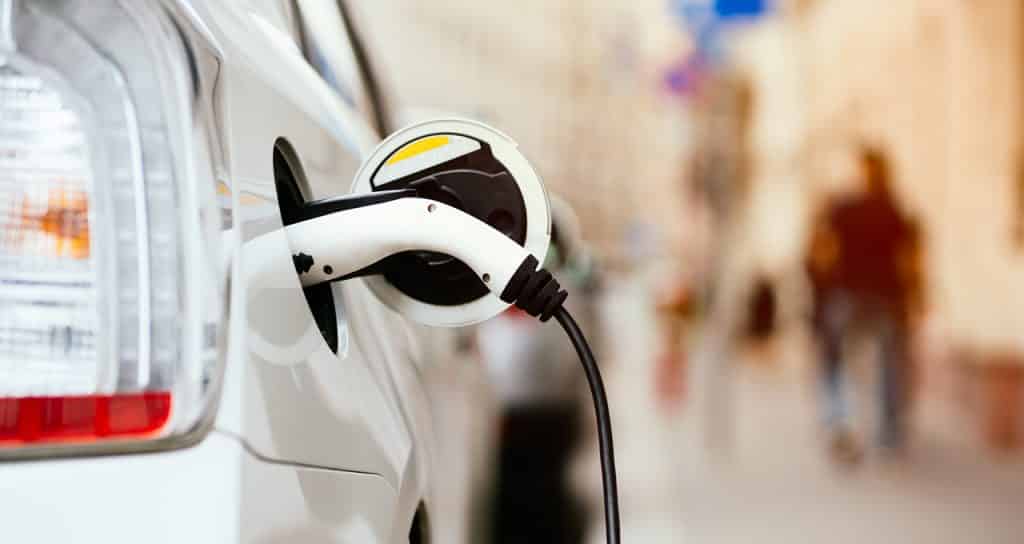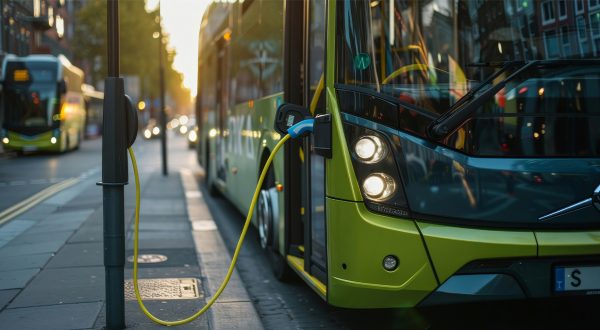In a landscape in which multiple power outputs for battery charging are set to coexist, the barriers to electric mobility are gradually coming down, signalling the emergence of the electric car as a driver of behavioural change.

This time it really does look like the electric car has stopped being a curiosity, something the general public has viewed with scepticism for some years, and could soon be a mainstream product. Experts agree, both the electric market and society have reached a tipping point.
The figures back this up: in 2020, 1 in 10 vehicles sold in Europe was electric or plug-in hybrid, compared with 3% in 2019. This means that the number of orders for electric vehicles (EVs) passed the one-million mark, up from the previous year’s figure of 387,000. Germany, in particular, is driving the market. It alone represents 40% of sales in Europe, split equally between battery electric vehicles (BEVs) and plug-in hybrid vehicles (PHEVs). Electric buses accounted for 6.1% of the European market in 2020.
In France, the total number of BEVs and PHEVs amounted to more than 535,000 in March 2021. The French Loi d’orientation des mobilités (LOM), a mobility guidance law passed in November 2019, requires that, by 2030, renewals of fleets of over 100 vehicles weighing less than 3.5 tonnes will need to rely on 50% of low-emission cars.
Another sign of the significant change under way is that all carmakers have new electric cars in the pipeline, delivering steadily increasing range. Around 20 new models are expected to hit the market in 2021, and here too the Germans are leading the way: Mercedes and BMW are set to bring out two new models apiece, while Audi, which has decided to abandon the internal combustion engine (ICE) from 2035, will launch three. German carmakers are also at the forefront in terms of range, with the BMW iX offering 600km and the Mercedes EQS 700km.
But the range issue remains one of the barriers to market deployment, along with the cost of vehicles, the low numbers of models, the weight and capacity of batteries and finally the provision of charging points, though in this last respect France is doing well. At the beginning of May 2021, specialised website Chargemap recorded around 21,600 charging pools and more than 112,000 plugs in the country, putting France neck and neck with Germany (23,500 charging pools and 79,500 plugs).
Steady progress in the field is helping to reduce the weight and cost of electric vehicles.
Expanding the network
This acceleration in electric mobility has led to a flurry of activity in the sector by public and private players, who have become conscious of the need to expand the charging point network.
Indeed, VINCI Energies is recording an increasing number of requests to install charge points, and in particular ultra-rapid chargers with power outputs of 150 to 350kW, which increase range from 150 to 300 or even 400km.
These HPC (High Power Charging) systems offer a solution to long-distance range anxiety. For a 465km trip from Paris to Lyon, a powerful EV could theoretically charge its battery in 15 minutes with a 350kW charger.
Following on from Tesla, which has rolled out a network of 120kW chargers in Europe that top up batteries in 40 minutes, Audi, BMW, Mercedes-Benz, Porsche and Ford set up IONITY to develop their own ultra-rapid charging network. By the spring of 2021, some 340 stations (which will increase to 400 over time), equipped with 6 charging points providing power of between 150 and 350kW, had been installed on Europe’s motorways, including 100 or so in France.
European level
“VINCI Energies is involved in this rollout project through its dedicated energy transition brands Omexom and Citeos, and Easy Charge, a joint VINCI Energies-VINCI Autoroutes subsidiary specialising in electric mobility”, says VINCI Energies.
The European dimension that projects have now taken on means taking into account each country’s regulatory and technical constraints. With operations throughout Europe, VINCI Energies is particularly well placed to support such rollouts.
France, too, has its share of initiatives. Take eborn, a project the Group is currently working on. The country’s largest network of charging points for EVs (1,200 chargers), eborn came under the management of Easy Charge in August 2020. “This 8-year concession contract is an example of the new electric charging infrastructure management schemes that are starting to emerge,” notes Khadija Tighanimine, market & development project manager at Omexom.
Diversifying supply
However, the importance of ultra-rapid charging should not be overemphasised. Yes, there is a psychological dimension to it insofar as it reassures drivers who are used to ICE range. But in practice, 80% of motorists drive less than 60km on a daily basis.
“It is less a case of installing ultra-rapid infrastructure all over the place than of refining our understanding of behaviours so as to add the right coverage to the system,” stresses VINCI Energies.
Slow charging, carried out overnight at home or during the day in an office car-park, is well suited to short journeys and is less expensive. Whereas fast charging is required for regional journeys and ultra-rapid charging for motorway driving.
The (variable) cost of battery charging will be a key factor in decision-making by consumers, and as a result in the diversification of the charging range. Cost is also a factor in terms of infrastructure deployment and, in the case of ultra-rapid solutions, network reinforcement. The challenge lies in finding an energy source to connect the charging station and thus optimise its use.
Providing a turnkey service
Ultra-rapid technology involves delivering very high power outputs and as such requires investments that need to be able to be recouped. It also involves managing load peaks, and this means integrating a smart charging system into the network, designing a smart grid that manages energy flows in an optimal manner and factoring in on-site energy storage near charging points.
Omexom and Citeos already have expertise in these integrated turnkey solutions.
“Mobility [a VINCI Energies brand specialising in transport infrastructure] has developed a public transport solution named Cway, a smart charging system for electric buses which switches the power supply from one vehicle to another in order to reduce delays and improve flow on the network,” explains Tighanimine.
“The system is based on providing a power supply at the depot, but buses can also rely on opportunity charging at each bus stop via a pantograph,” points out Pauline Gaillard, technology and innovation project manager at Omexom.
“Cultural” changes
Overcoming the barriers to the mass development of electric cars will also require cultural and societal change, for example in relation to the density of charging points in public spaces.
However, the challenges and constraints vary depending on the location: urban or rural.
“Charging infrastructure is far less developed in the countryside. But in less isolated rural parts or suburban areas, electric mobility – with an average range of 300km – remains a possibility since most charging is done at home. Where it’s more problematic is for professionals travelling to these as yet under-equipped areas,” stresses Gaillard, who notes that plug-in hybrids are often the preferred solution.
But steady progress in the field is helping to increase battery capacity while reducing the weight and cost of the accumulator, and therefore the electric vehicle itself.
B2B market
Furthermore, government support is contributing to the growth of the electric vehicle market. In France, the grant of up to €7,000 for the purchase of EVs (which was extended until 30 June 2021), free parking in some cities and pollution fines have helped boost sales. Similarly, the ADVENIR subsidy programme (ranging from €960 to €240,000) actively supports the creation of private or publicly available charging infrastructure. Company fleets are in the frontline.
“The corporate market already accounts for 50% of electric car registrations. This will supply the used car market within two to three years, making it easier for the mass market to access EVs,” says Pauline Gaillard.
The contrasting examples of Norway and Denmark also provide illuminating insights. A champion of electric mobility, Norway decided to phase out internal combustion engines by 2025, rolling out a system of incentives and subsidies, including tax breaks, EV access to bus lanes, exemption from parking fees, urban road tolls and ferries, and so on. Add to that a dense network of charging points.
Conversely, Denmark has seen sales plummet since 2016 following the removal of support. Two years on from 2016, the Danish government reconsidered its position, deciding to ban the sale of diesel and petrol cars in the country by 2030.
Political will not make or break the electric car, but it will certainly play a key role.
16/09/2021





